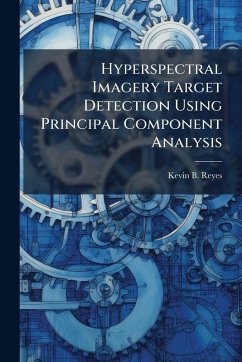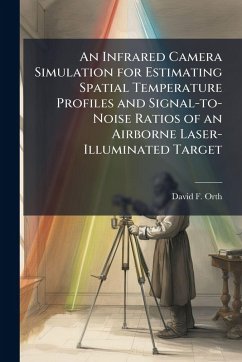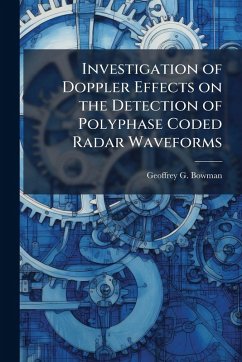
Hyperspectral Imagery Target Detection Using Improved Anomaly Detection and Signature Matching Methods
Versandkostenfrei!
Versandfertig in über 4 Wochen
24,99 €
inkl. MwSt.
Weitere Ausgaben:

PAYBACK Punkte
12 °P sammeln!
This research extends the field of hyperspectral target detection by developing autonomous anomaly detection and signature matching methodologies that reduce false alarms relative to existing benchmark detectors. The proposed anomaly detection methodology adapts multivariate outlier detection algorithms for use with hyperspectral datasets containing thousands of high-dimensional spectral signatures. In so doing, the limitations of existing, non-robust anomaly detectors are identified, an autonomous clustering methodology is developed to divide an image into homogeneous background materials, an...
This research extends the field of hyperspectral target detection by developing autonomous anomaly detection and signature matching methodologies that reduce false alarms relative to existing benchmark detectors. The proposed anomaly detection methodology adapts multivariate outlier detection algorithms for use with hyperspectral datasets containing thousands of high-dimensional spectral signatures. In so doing, the limitations of existing, non-robust anomaly detectors are identified, an autonomous clustering methodology is developed to divide an image into homogeneous background materials, and competing multivariate outlier detection methods are evaluated. To arrive at a final detection algorithm, robust parameter design methods are employed to determine parameter settings that achieve good detection performance over a range of hyperspectral images and targets. The final anomaly detection algorithm is tested against existing local and global anomaly detectors, and is shown to achieve superior detection accuracy when applied to a diverse set of hyperspectral images.The proposed signature matching methodology employs image-based atmospheric correction techniques in an automated process to transform a target reflectance signature library into a set of image signatures. This set of signatures is combined with an existing linear filter to form a target detector that is shown to perform as well or better relative to detectors that rely on complicated, information-intensive atmospheric correction schemes. The performance of the proposed methodology is assessed using a range of target materials in both woodland and desert hyperspectral scenes. This work has been selected by scholars as being culturally important, and is part of the knowledge base of civilization as we know it. This work was reproduced from the original artifact, and remains as true to the original work as possible. Therefore, you will see the original copyright references, library stamps (as most of these works have been housed in our most important libraries around the world), and other notations in the work. This work is in the public domain in the United States of America, and possibly other nations. Within the United States, you may freely copy and distribute this work, as no entity (individual or corporate) has a copyright on the body of the work. As a reproduction of a historical artifact, this work may contain missing or blurred pages, poor pictures, errant marks, etc. Scholars believe, and we concur, that this work is important enough to be preserved, reproduced, and made generally available to the public. We appreciate your support of the preservation process, and thank you for being an important part of keeping this knowledge alive and relevant.





![Musson's Improved Lumber and Log Book, 1905 [microform]: for Ship and Boat Builders, Lumber Merchants, Saw-mill Men, Farmers and Mechanics: Based on J Cover Musson's Improved Lumber and Log Book, 1905 [microform]: for Ship and Boat Builders, Lumber Merchants, Saw-mill Men, Farmers and Mechanics: Based on J](https://bilder.buecher.de/produkte/66/66159/66159659n.jpg)






